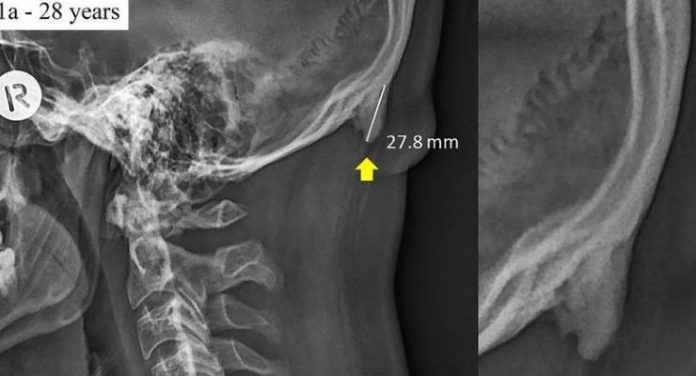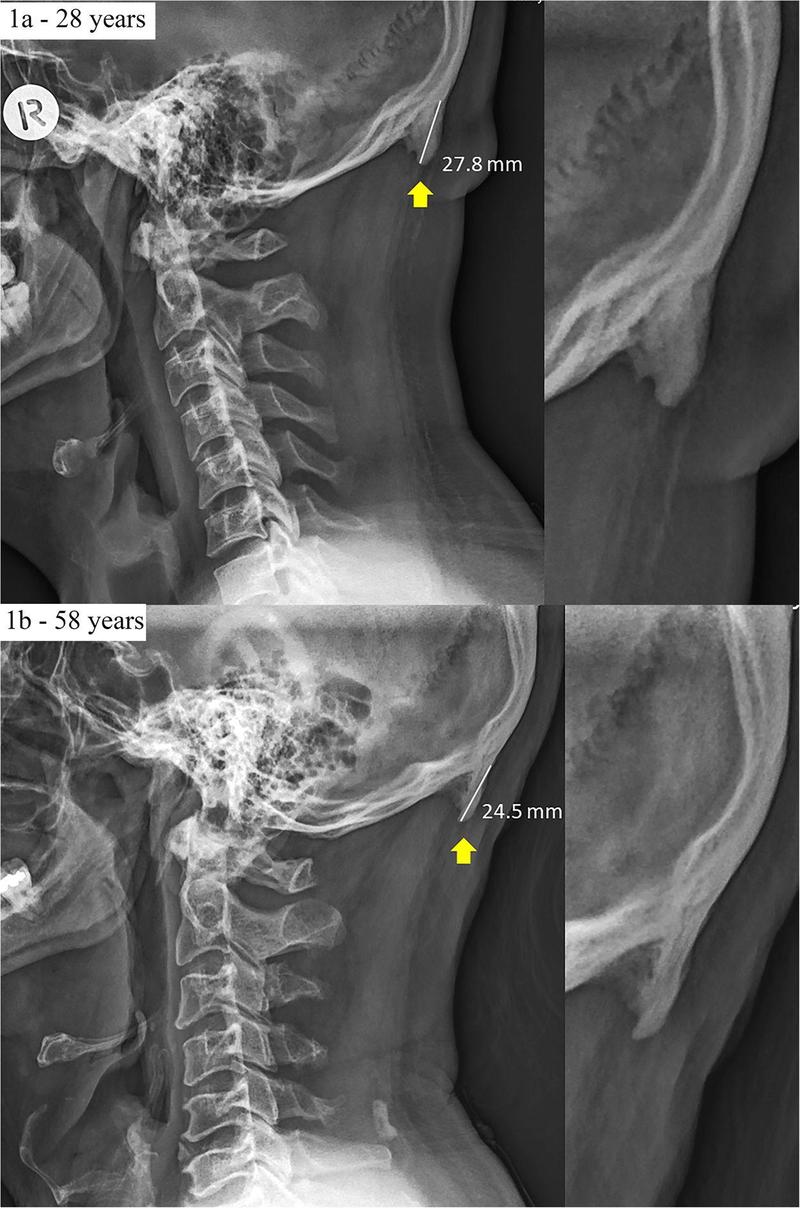
UPDATE: John Hawks, a paleoanthropologist at the University of Wisconsin, has challenged the study, claiming the researchers “haven’t provided the data to back up their claim.”
(ZH) — Modern life is transforming the human skeleton. Humans are now developing a bone spike at the back of the head caused by regularly looking down at their smartphones, according to a recent study cited by the Washington Post.
The phenomenon is called an external occipital protuberance: a lump on the back of the head believed to be caused by the body reacting to smartphone use by growing new bone layers on the back of the skull.
 David Shahar, a health scientist at the University of The Sunshine Coast, Australia, told BBC that in the last twenty years, he has noticed a spike in patients who have the extra bone layers was once considered rare.
David Shahar, a health scientist at the University of The Sunshine Coast, Australia, told BBC that in the last twenty years, he has noticed a spike in patients who have the extra bone layers was once considered rare.
The study was published in the Journal of Anatomy in 2016, Shahar and his co-author wrote how they discovered the phenomenon in x-rays of millennials at his clinic. He examined 218 radiographs of the lateral cervical spine, where external occipital protuberance appeared in 18 to 30-year-olds.
Of the group, 41% had the lump, with 10% having a spike at least 20mm long. The study noted it was more common in men than women, at 67% versus 20%. The longest was 35.7mm in a man and 25.5mm in a woman.
The extra bone is a type of enthesophytes, which is abnormal bony projections located on a tendon or ligament. Enthesophytes are common in baby boomers but not so much with millennials until the last decade.
Shahar said the proliferation of hand‐held technologies from early childhood, could explain his findings.
He said the phenomenon dubbed “text neck,” is when the neck must work extra hard to stabilize the head in place while the head is pointed down to view devices like smartphones and tablets. Extended screen time will force the body to create more bond on the back of the skull to support the head.
According to another study in the journal Scientific Reports in 2018 involving 1200 participants aged between 18 to 86, Shahar discovered millennials were more likely to develop external occipital protuberance than baby boomers.
Shahar said, humans, participating in modern society will likely keep developing the lump and will become more substantial over time — “Imagine if you have stalactites and stalagmites, if no one is bothering them, they will just keep growing.”





